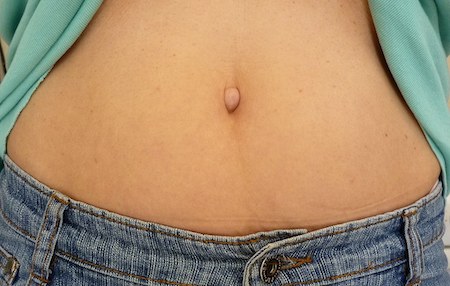Belly Button Lint and the Ig Nobel Prizes
Welcome to the Land of The Who Knew
I’ve been navel-gazing — all in the name of science, and I’ve learned a lot about belly button lint. Of course, I want to share. So, buckle up, my friends, for this first-ever Muddling through Middle Age, SCIENCE EDITION!
Thanks to two intrepid scientists who dug deep, we innies and outies now know the dirty secrets of our belly buttons.
Belly Button Lint
The first navel spelunker, Georg Steinhauser of the Vienna University of Technology in Austria, spent three years analyzing 503 pieces of belly button gunk. He collected the material from his own navel and that of family, friends, and colleagues.
Now, I don’t know if old Georg is married or not, but can you imagine what a great pick-up line he could have employed at bars to gather research material, something like, “Hey, baby, I was wondering if I could probe your belly button — all in the name of science, of course? Hey, no, really. I’m a navel lint scientist.”
Georg’s findings: belly button lint contains house dust, skin cells, sweat, and shirt fibers.
He also concluded that stomach hair was critical for accumulating navel lint and that old T-shirts were less likely to produce fluff than new clothing. To this, I say: Georg’s research seemed to skew toward the guys. Now, I’m not saying I personally ever have lint in my navel, but if I did, it most definitely would not be associated with stomach hair or wearing old — or new — tee shirts! Really, Georg!
And More Belly Button Lint!
But for all his efforts, it was another navel gazer who won (ignoble) scientific glory. Karl Kruszelnicki of the University of Sydney in Australia did that.
Karl surveyed 4,799 people. He concluded that being male, having an “innie” rather than “outie” and older age were all associated with accumulating more lint.
His work earned him a 2002 Ig Nobel Prize, a distinction presented for humorous but real scientific achievements.
The Ig Nobels Have It All!
The satiric Ig Nobels have been awarded since 1991 to celebrate ten unusual or trivial achievements in scientific research. The aim is to “honor achievements that first make people laugh, and then make them think.”
Organized by the scientific humor magazine (?) Annals of Improbable Research, real Nobel laureates present the Ig Nobel prizes in a ceremony at Harvard University. Winners then present public lectures at the Massachusetts Institute of Technology.
The awards have included discovering that the presence of humans tends to sexually arouse ostriches and an experiment in which a frog was levitated by magnetism. That award recipient went on to win an actual Nobel Prize in physics a decade later for his work with electromagnetism. He is the only individual to date to receive both prizes.
Ig Nobel Delights
For the full list of Ig Nobel award recipients — and a good educational laugh, click here.
As for our linty belly buttons, a word of caution. Doctors say if there is ever any pain or discharge, be sure to consult a medical professional.
All this navel gazing reminds me of one of my all-time favorite Yiddish blessings. It was often recited by my grandmother when we kids boasted of some minor achievement:
A gezunt dir in pupik.
God bless your belly button.
🗓️ 🗓️ 🗓️
And mark your calendars! The “33rd First Annual” Ig Nobel Prize ceremony is scheduled to be broadcast live via the Web on Thursday, September 14 at 6 p.m. ET.




Leave a Reply
Want to join the discussion?Feel free to contribute!